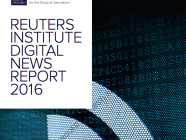A new study reveals that students in the U.S. are eager to consume news on digital devices but only when they don’t have to pay for it. They are however more willing to pay for magazine content online. Steve Collins and Tim Brown at the University of Central Florida and Michael Rabby at Washington State University Vancouver asked 452 students at an unnamed large public university in the southeastern U.S. about their digital reading habits in fall 2010 and spring 2011 when the iPad and iPad2 were released.
According to the researchers, 73.9 percent of participants surveyed are “very likely” to read a free online newspaper on a tablet device, while only 20.6 percent of those interviewed declared themselves willing to spend $1 for access to a newspaper’s digital version. Nearly 70 percent of students indicated that they’d use a free application to read a tablet version of a newspaper, while only 22 percent expressed a willingness to pay $5 to download the app from iTunes, Google Play, or other online marketplaces.
On a positive note, the researchers said “magazines fared better.” Consumers were more willing to crack open their digital wallet when paying to read magazine articles, for instance 20 percent of participating students said they would spend $3 to download an app and 27 percent said they would spend $15 for a digital subscription. Pay for print/get free digital options held less value among students, with only a few participants (29.1 percent) choosing this option for a newspaper, with slightly better numbers for tablets (37.5 percent).
The research shows that at least a few young adults are in principle willing to pay for news on their tablets. But an unsolved question remains: will charging online readers become a sustainable and effective business model for the media industry in the future? Students are sensitive to price. According to the researchers, “students were significantly less likely to say they would pay $30 for a subscription than they were to say they would pay $15 for a subscription.” Even without empirical evidence, researchers suggest that given students’ general attitude to money, “there is a reason to believe publications wishing to target young consumers should assume this cost sensitivity”.
The students who took part in the study were also asked how innovative they are technologically. In this case, the researchers measured it by asking them about their willingness to buy an Apple iPad or iPad 2 and then asking them to provide potential future uses for the product. Innovativeness was defined in Carolyn A. Lin’s terms of “a personality attribute found in people who are more willing to take risks in adopting new products/innovations earlier than other people.”
The study examined whether students with an higher rate of “innovativeness” are more willing to buy an iPad, but decided that this link between innovation and iPad purchasing was not that strong. Owning an iPad is no longer an indication that someone is an early adopter of innovative technology. As they become more common, they will no longer be a sign of innovation. As mentioned above, there is also no direct correlation between the willingness to buy an iPad and a willingness to subscribe to a digital news service. Only a small proportion of students will also spend money to read a newspaper or magazine.
Students are “digital natives, who have got used to news and other information being free online. Paying directly for news is not something they have done in the past and is not an act they consider to be innovative. The research shows that some students are generally willing to pay for news on their tablets but most will not. As media companies across the world consider whether and how to build paywalls and monetise their content, the findings of this study raises the question of whether charging readers to access news online can ever become a sustainable and effective business model for the media industry.
Collins, Steve; Michael, Rabby and Tim Brown. (2013). “Few Students Willing to Pay For Tablet News Content”. Newspaper Research Journal. Vol. 34, No. 1
Photo credits: Philip Di Salvo / EJO
Tags: Apple iPad, Digital Natives, Mobile applications, Pay Models, Paying for Online Content, Paywalls, tablets, University of Central California, Washington State University Vancouver












































